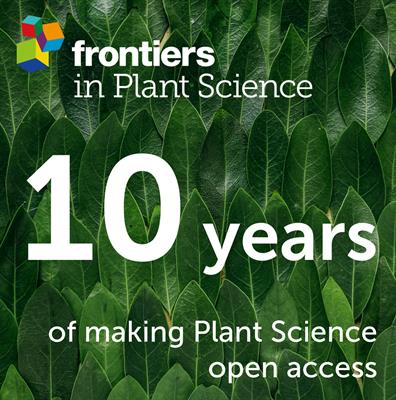利用高光谱反射率对小麦条锈病的发展进行无创诊断
IF 4.1
2区 生物学
Q1 PLANT SCIENCES
引用次数: 0
摘要
小麦条锈病(WSR)是一种真菌病害,可造成严重的作物损失,威胁着全球大部分小麦生产。遗传抗性育种是抵御条锈病感染的主要手段。抗锈病小麦品种的进一步开发取决于准确、快速量化锈病抗性的能力。在本研究中,我们证明了可见光到短波红外反射光谱法能够有效地对小麦条锈病严重程度进行高通量分类,并确定了影响分类准确性的重要光谱区域。我们利用在育种群体中收集到的叶片级和冠层级高光谱反射观测数据开发了随机森林模型,育种群体的小麦条锈病严重程度分别按 10 个和 5 个严重程度等级进行评分。这些模型能够在 45-52% 的时间内准确诊断出这些精细评分尺度下的疾病严重程度等级,当允许评分偏差为 1 时,准确率提高到 79-96%。与叶片级模型相比,树冠级模型表现出更高的准确性和明显的光谱特征,表明该技术可用于田间监测。尽管小麦生长阶段之间的评分存在明显差异,但叶片级模型的性能很强。这里采用了两种方法来降低预测因子和模型的复杂性,即主成分降维和后向特征消除。这两种方法都表明,在简化高维高光谱反射率预测因子的同时,模型分类技能仍能保持较高水平,简约模型大约有 10 个独特的分量或波段。通过使用高分辨率感染严重程度评分方法,本研究为使用高光谱反射观测进行 WSR 分类提供了最严格的测试之一。我们证明,机器学习与精心选择的几个波段相结合,可用于对 WSR 进行精确的远程监测和管理,以限制作物损害,并帮助育种计划选择抗病性强的种质。本文章由计算机程序翻译,如有差异,请以英文原文为准。
Non-invasive diagnosis of wheat stripe rust progression using hyperspectral reflectance
Wheat stripe rust (WSR), a fungal disease capable of inflicting severe crop loss, threatens most of global wheat production. Breeding for genetic resistance is the primary defense against stripe rust infection. Further development of rust-resistant wheat varieties depends on the ability to accurately and rapidly quantify rust resilience. In this study we demonstrate the ability of visible through shortwave infrared reflectance spectroscopy to effectively provide high-throughput classification of wheat stripe rust severity and identify important spectral regions for classification accuracy. Random forest models were developed using both leaf-level and canopy-level hyperspectral reflectance observations collected across a breeding population that was scored for WSR severity using 10 and 5 severity classes, respectively. The models were able to accurately diagnose scored disease severity class across these fine scoring scales between 45-52% of the time, which improved to 79-96% accuracy when allowing scores to be off-by-one. The canopy-level model demonstrated higher accuracy and distinct spectral characteristics relative to the leaf-level models, pointing to the use of this technology for field-scale monitoring. Leaf-level model performance was strong despite clear variation in scoring conducted between wheat growth stages. Two approaches to reduce predictor and model complexity, principal component dimensionality reduction and backward feature elimination, were applied here. Both approaches demonstrated that model classification skill could remain high while simplifying high-dimensional hyperspectral reflectance predictors, with parsimonious models having approximately 10 unique components or wavebands. Through the use of a high-resolution infection severity scoring methodology this study provides one of the most rigorous tests of the use of hyperspectral reflectance observations for WSR classification. We demonstrate that machine learning in combination with a few carefully-selected wavebands can be leveraged for precision remote monitoring and management of WSR to limit crop damage and to aid in the selection of resilient germplasm in breeding programs.
求助全文
通过发布文献求助,成功后即可免费获取论文全文。
去求助
来源期刊

Frontiers in Plant Science
PLANT SCIENCES-
CiteScore
7.30
自引率
14.30%
发文量
4844
审稿时长
14 weeks
期刊介绍:
In an ever changing world, plant science is of the utmost importance for securing the future well-being of humankind. Plants provide oxygen, food, feed, fibers, and building materials. In addition, they are a diverse source of industrial and pharmaceutical chemicals. Plants are centrally important to the health of ecosystems, and their understanding is critical for learning how to manage and maintain a sustainable biosphere. Plant science is extremely interdisciplinary, reaching from agricultural science to paleobotany, and molecular physiology to ecology. It uses the latest developments in computer science, optics, molecular biology and genomics to address challenges in model systems, agricultural crops, and ecosystems. Plant science research inquires into the form, function, development, diversity, reproduction, evolution and uses of both higher and lower plants and their interactions with other organisms throughout the biosphere. Frontiers in Plant Science welcomes outstanding contributions in any field of plant science from basic to applied research, from organismal to molecular studies, from single plant analysis to studies of populations and whole ecosystems, and from molecular to biophysical to computational approaches.
Frontiers in Plant Science publishes articles on the most outstanding discoveries across a wide research spectrum of Plant Science. The mission of Frontiers in Plant Science is to bring all relevant Plant Science areas together on a single platform.
 求助内容:
求助内容: 应助结果提醒方式:
应助结果提醒方式:


